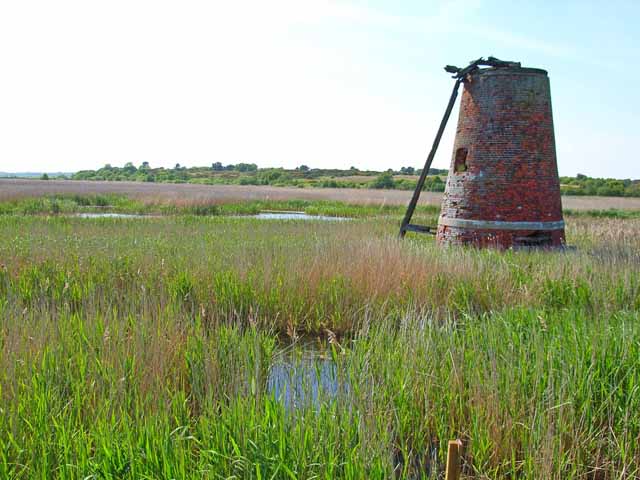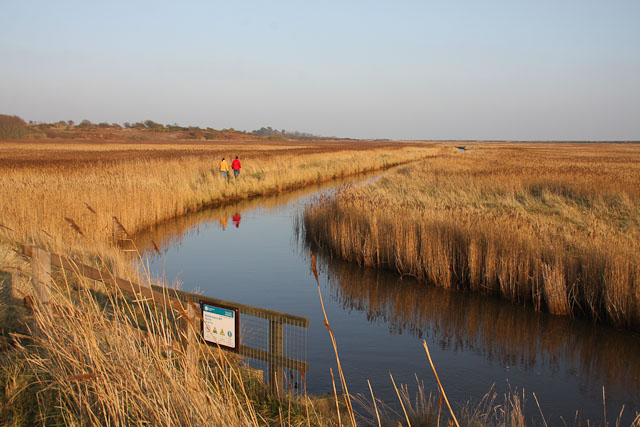Walberswick NNR on:
[Wikipedia]
[Google]
[Amazon]
 Suffolk Coast National Nature Reserve is a wildlife reserve on the North Sea coast of the English county of
Suffolk Coast National Nature Reserve is a wildlife reserve on the North Sea coast of the English county of
''Natural England''. Retrieved 2012-10-31.National nature reserve to be unveiled
''East Anglian Daily Times'', 2003-06-11. Retrieved 2012-10-31. The reserve is managed by Natural England in conjunction with the
 The Walberswick section of the reserve is the largest at . It contains a range of habitats including reedbed, hay meadows, grazing marshes, heather and grass heathlands and a variety of mixed and broadleaved woodlands. Along the coast shingle banks and beaches, saline lagoons and intertidal estuary and saltings are also present, providing a range of fresh, brackish and salt water habitats, whilst the area along the Blyth estuary provides mudflats and grazing marsh.
The reserve has around 500 species of butterflies and moths, including the
The Walberswick section of the reserve is the largest at . It contains a range of habitats including reedbed, hay meadows, grazing marshes, heather and grass heathlands and a variety of mixed and broadleaved woodlands. Along the coast shingle banks and beaches, saline lagoons and intertidal estuary and saltings are also present, providing a range of fresh, brackish and salt water habitats, whilst the area along the Blyth estuary provides mudflats and grazing marsh.
The reserve has around 500 species of butterflies and moths, including the
 Suffolk Coast National Nature Reserve is a wildlife reserve on the North Sea coast of the English county of
Suffolk Coast National Nature Reserve is a wildlife reserve on the North Sea coast of the English county of Suffolk
Suffolk () is a ceremonial county of England in East Anglia. It borders Norfolk to the north, Cambridgeshire to the west and Essex to the south; the North Sea lies to the east. The county town is Ipswich; other important towns include Lowes ...
. It is located around the village of Walberswick
Walberswick is a village and civil parish on the Suffolk coast in England. It is at the mouth of the River Blyth on the south side of the river. The town of Southwold lies to the north of the river and is the nearest town to Walberswick, around ...
to the south of the town of Southwold. The reserve was designated in 2003, combining the existing Walberswick National Nature Reserve with reserves at Dingle Marshes
Dingle Marshes is a wildlife reserve on the North Sea coast of the England, English county of Suffolk. The reserve is located between Dunwich and Walberswick, approximately south-west of Southwold. The marshes make up part of the Suffolk Coast ...
and Hen Reedbeds
Hen Reedbeds is a 55 hectare nature reserve near the North Sea coast of the English county of Suffolk. The reserve is located in the Blyth valley between Reydon and Blythburgh, approximately west of Southwold. The marshes make up part of the Suf ...
to create a reserve.Suffolk Coast NNR''Natural England''. Retrieved 2012-10-31.National nature reserve to be unveiled
''East Anglian Daily Times'', 2003-06-11. Retrieved 2012-10-31. The reserve is managed by Natural England in conjunction with the
RSPB
The Royal Society for the Protection of Birds (RSPB) is a Charitable_organization#United_Kingdom, charitable organisation registered in Charity Commission for England and Wales, England and Wales and in Office of the Scottish Charity Regulator, ...
and Suffolk Wildlife Trust. The Dingle Marshes reserve is owned jointly by these two organisations, whilst the Hen Reedbeds area is owned by Suffolk Wildlife Trust. The Walberswick marshes section of the reserve is largely in private ownership and managed by Natural England. The reserve lies within the Minsmere-Walberswick Heaths and Marshes Site of Special Scientific Interest
A Site of Special Scientific Interest (SSSI) in Great Britain or an Area of Special Scientific Interest (ASSI) in the Isle of Man and Northern Ireland is a conservation designation denoting a protected area in the United Kingdom and Isle of ...
and includes areas designated as Natura 2000
Natura 2000 is a network of nature protection areas in the territory of the European Union. It is made up of Special Areas of Conservation and Special Protection Areas designated under the Habitats Directive and the Birds Directive, respectively ...
sites and Ramsar sites.
History
The marshland areas of the reserve were drained to use as farmland between the 16th and 18th centuries, providing grazing land.'Walberswick National Nature Reserve', ''Natural England''. The marshes to the south of Walberswick were flooded during the Second World War to act as invasion defences. A number of pillboxes and other military defences can be found on the reserve. The marshes reverted to reedbeds during the 1940s and 50s, creating a range of habitats which are now preserved in the reserve. The reeds are cut by local commercial reedcutters for use in thatching, whilst grazing marshland is used for cattle grazing. Heathland areas of the reserve were traditionally used for grazing sheep. Rabbits played a major role in maintaining this landscape until the mixamatosis outbreak of 1953 after which much the heathland area of the reserve began to revert to birth woodland. Management of the heathland areas of the reserve has involved the removal of woodland species and the reintroduction of sheep grazing to retain the heathland in its traditional form.Habitats
 The Walberswick section of the reserve is the largest at . It contains a range of habitats including reedbed, hay meadows, grazing marshes, heather and grass heathlands and a variety of mixed and broadleaved woodlands. Along the coast shingle banks and beaches, saline lagoons and intertidal estuary and saltings are also present, providing a range of fresh, brackish and salt water habitats, whilst the area along the Blyth estuary provides mudflats and grazing marsh.
The reserve has around 500 species of butterflies and moths, including the
The Walberswick section of the reserve is the largest at . It contains a range of habitats including reedbed, hay meadows, grazing marshes, heather and grass heathlands and a variety of mixed and broadleaved woodlands. Along the coast shingle banks and beaches, saline lagoons and intertidal estuary and saltings are also present, providing a range of fresh, brackish and salt water habitats, whilst the area along the Blyth estuary provides mudflats and grazing marsh.
The reserve has around 500 species of butterflies and moths, including the silver-studded blue
The silver-studded blue (''Plebejus argus'') is a butterfly in the family Lycaenidae. It has bright blue wings rimmed in black with white edges and silver spots on its hindwings, lending it the name of the silver-studded blue. ''P. argus'' can be ...
and white admiral butterflies. Other invertebrate species include solitary bees and wasps
A wasp is any insect of the narrow-waisted suborder Apocrita of the order Hymenoptera which is neither a bee nor an ant; this excludes the broad-waisted sawflies (Symphyta), which look somewhat like wasps, but are in a separate suborder. T ...
, ant-lions and over 100 species of cranefly. Bird species number around 300, including bitterns
Bitterns are birds belonging to the subfamily Botaurinae of the heron family Ardeidae. Bitterns tend to be shorter-necked and more secretive than other members of the family. They were called ''hæferblæte'' in Old English; the word "bittern" ...
and marsh harriers, whilst mammals found include otter
Otters are carnivorous mammals in the subfamily Lutrinae. The 13 extant otter species are all semiaquatic, aquatic, or marine, with diets based on fish and invertebrates. Lutrinae is a branch of the Mustelidae family, which also includes wea ...
s and five species of deer. Natterjack toads have been re-introduced to the area. Flora found in the reserve include species such as marsh sowthistle, bog pimpernel
''Anagallis tenella'', known in Britain as the bog pimpernel, is a low growing perennial plant found in a variety of damp habitats from calcareous dune slacks to boggy and peaty heaths in Eurasia. In the United Kingdom it is mostly restricte ...
, sneezewort
''Achillea ptarmica'' is a European species of herbaceous perennial flowering plant in the genus ''Achillea'' of the daisy family Asteraceae. Common names include the sneezewort, sneezeweed, bastard pellitory, European pellitory, fair-maid-of-Fr ...
, and greater bladderwort
''Utricularia vulgaris'' (greater bladderwort or common bladderwort) is an aquatic species of bladderwort found in Asia and Europe. The plant is free-floating and does not put down roots. Stems can attain lengths of over one metre in a single g ...
in the wetland areas. Heathland areas feature species such as fenugreek
Fenugreek (; ''Trigonella foenum-graecum'') is an annual plant in the family Fabaceae, with leaves consisting of three small obovate to oblong leaflets. It is cultivated worldwide as a semiarid crop. Its seeds and leaves are common ingredients ...
and mossy stonecrop
''Crassula tillaea'' is a succulent plant known by its common names mossy stonecrop and moss pygmyweed. It is a small fleshy plant growing only a few centimeters in height. It is green when new and gradually turns orange and then deep red when ma ...
.
Hen Reedbeds
Hen Reedbeds is a 55 hectare nature reserve near the North Sea coast of the English county of Suffolk. The reserve is located in the Blyth valley between Reydon and Blythburgh, approximately west of Southwold. The marshes make up part of the Suf ...
contains a mixture of reedbed, dykes, pools and fen habitats. Dingle Marshes
Dingle Marshes is a wildlife reserve on the North Sea coast of the England, English county of Suffolk. The reserve is located between Dunwich and Walberswick, approximately south-west of Southwold. The marshes make up part of the Suffolk Coast ...
contains a mixture of coastal and freshwater wetland habitats, including brackish pools. Both are nationally important breeding grounds for bitterns and marsh harriers, whilst Dingle Marshes is an internationally important site for the starlet sea anemone
The starlet sea anemone (''Nematostella vectensis'') is a species of small sea anemone in the Family (biology), family Edwardsiidae native to the east coast of the United States, with introduced populations along the coast of southeast England an ...
.
Facilities
A number of car parks and waymarked walking routes are provided on the reserve. Three audio trails can be downloaded and used by visitors. Three permanent bird hides are sited on the reserve.References
{{coord, 52.316, 1.625, dim:3000_region:GB, display=title Nature reserves in Suffolk National nature reserves in England Ramsar sites in England Walberswick Suffolk coast